Last week I was tasked with removing the last of the cotton from between STEADFAST’S planks, tucked there forty years ago by hands that come to visit us on a regular basis. I fell to reefing a few more seams on the hull sides, seams that will eventually need to be refilled with fresh cotton and sealed; recaulked is the proper term.
The idiom, the expression, in high cotton refers to being in a favorable or prosperous situation. According to Grammarist, it means someone is doing well, whether financially, socially, or otherwise, generally because a person has worked hard for what they have.
The literal meaning of high cotton refers to tall, healthy cotton plants that are abundant and profitable. High cotton is advantageous to everyone involved, including the harvesters, as it is much easier to pick the tall cotton crops than the low ones.
It’s nice, isn’t it, when something is advantageous to all involved? A bit of a rare thing, perhaps, but as we work together toward the goal of saving this historic vessel we are definitely in high cotton, regardless of the setbacks and the enormity of the task compared to what we originally thought we were going to be doing.
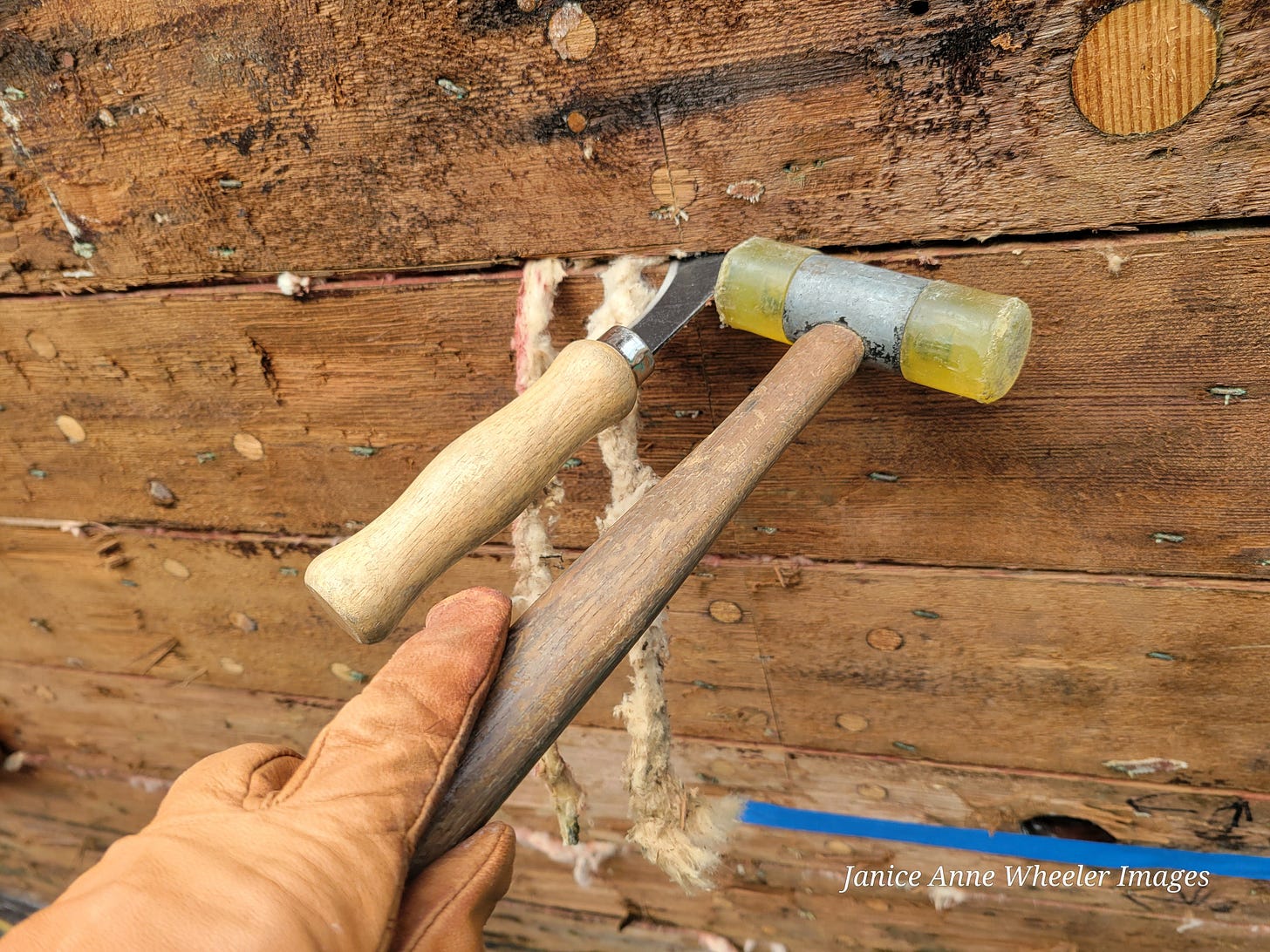
As I tap-tapped in my reefing rhythm, I could hear Steve, opposite me on the aft quarter, tap-tapping, replacing cotton. The sounds were so similar and the tasks so opposite that they made me laugh a truly rueful laugh. The scope of our repair project does not seem to diminish, not yet. It will. This week we finally removed the last of the planks to be replaced, cleaned the last of the seams, wrestled the last of the corroded bronze screws (fastenings) out and carefully filled all those holes with white oak dowels in order to ensure that when we refasten, it will be to a solid structure and not one riddled with imperfections.
There are so many procedures, so many redundant, rhythmic steps in this age-old process that the rhythms are important for an assortment of reasons. Cotton, along with hemp and probably other similar materials based on geography and time period, has been used to seal the seams in wooden boats for millennia. Prior to caulking we treat the bare wood with a mixture of linseed oil and turpentine, which smells delightfully of pitch and naturally protects the wood with its own distilled components.
The spaces between the planks are designed in such a way that the gap is narrower at the back but still not quite flush. When we re-launch (perhaps May? I know we’re all curious…) the wood will swell and expand, creating a water-tight seam that is still resilient enough to withstand the near-continuous movements of the vessel.
In a recent post I discussed the fact that all boats, and wooden boats in particular, are one interdependent entity, when a part flexes one way, the rest must flex as well. The forces of wind, water and waves, all potentially pulling and pushing in opposite directions, are tremendous. Caulking is a crucial element in the strength and cohesiveness of the design.
I’ve always been a fan of cotton. Those natural fibers are still my preferred clothing even with the ‘advancements’ available out there. I love a soft and rough cotton towel after a hot shower and while I know wool is what I’m going to be sporting for the next few months, I’ll be ready to dawn my favorite t-shirts come spring.
The cotton we are pounding into the seams of STEADFAST is the softest and most beautiful I have ever seen; it feels remarkable to the touch. The one-pound packages consist of long chains where the strands have been processed and combed to all go in the same direction. I’m sure there’s more to it than that, and my encyclopedic boatbuilder W. Duncan will certainly tell me more when I inquire. If it’s interesting enough, I’ll be sure to pass it on.
After the strands are rolled into a more rope-like shape, generally three, or in some cases, four rows are pounded into the seams with specially designed irons by a very specific, rhythmic method of looping and tucking.
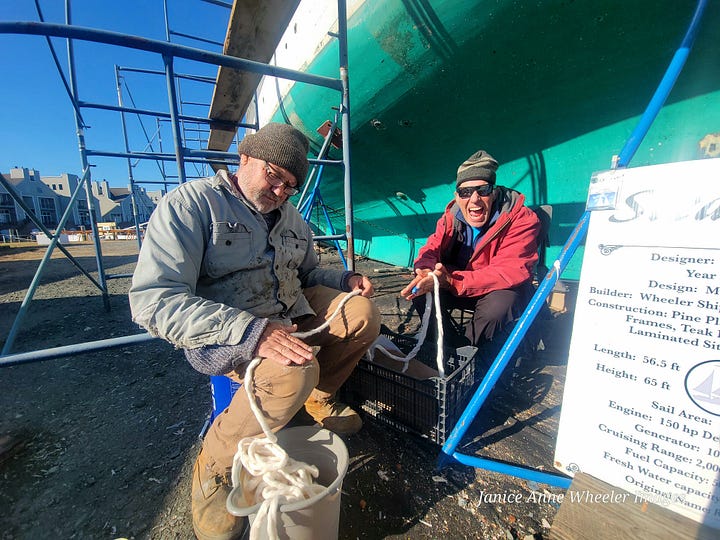
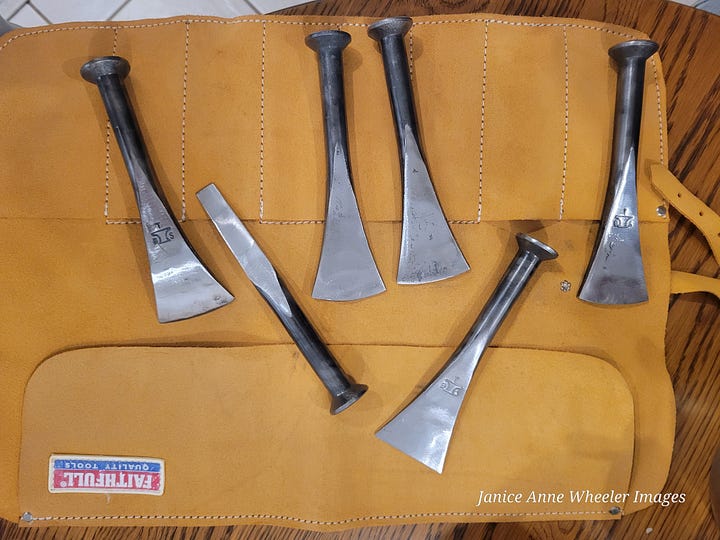
All of the senses are utilized when properly caulking; the eyes to see proper depth and quantity, the sound of the hammers to ensure a tight fit, the feel of the entire process, and the sixth sense that allows repetitive, effective movements day after day until those rewarding movements become second nature.
I’ve mentioned Dmitri, the gentleman who executed the rebuild of this very same vessel in the 1980s. It took him ten years, and thereafter was a work in progress. We’ll be here nearly ten months, I’d guess, when all is repaired and beautiful again, said and done. This yacht, age ninety, will always be a work in progress.
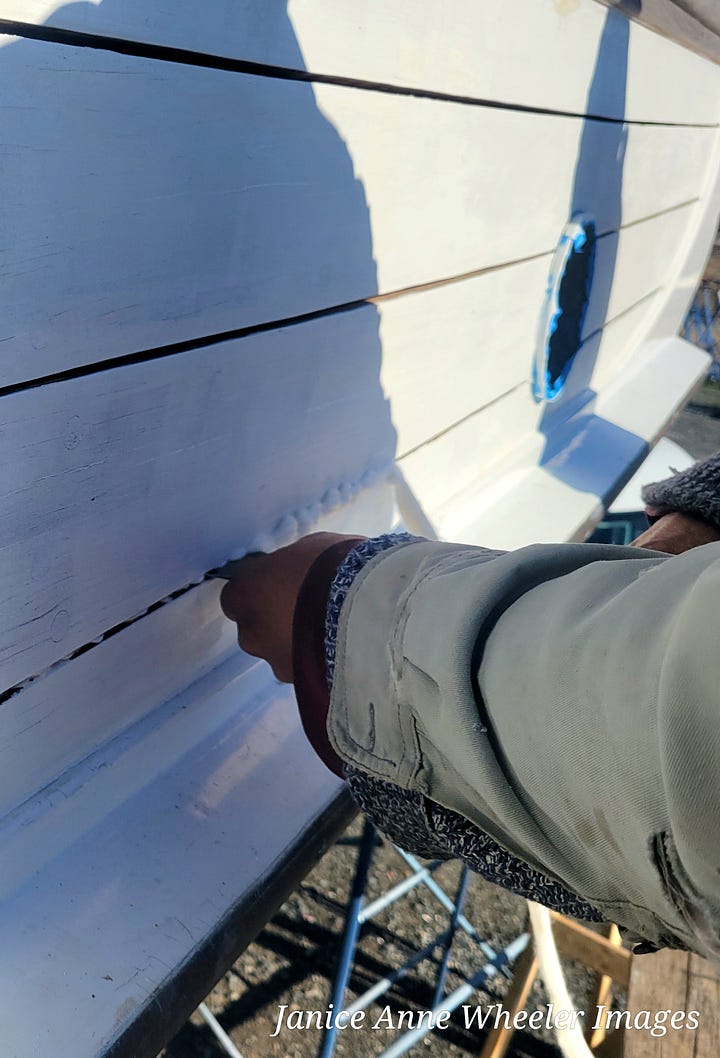
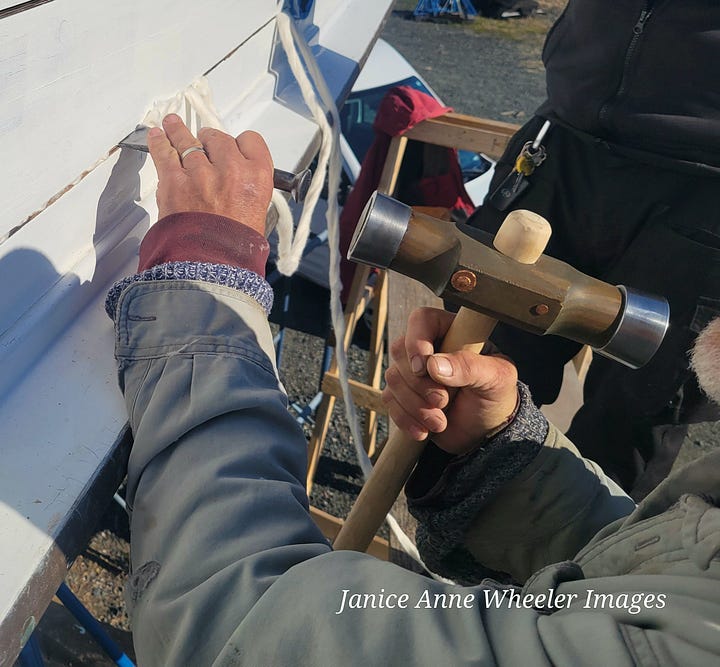
As a community that enjoys SPARRING WITH MOTHER NATURE and all the other benefits of our modern lives, we are most certainly walking in HIGH COTTON. When challenges arise it can be harder to remember how fortunate we are to have all that we do. I try to never take it for granted.
~J
You may want to step back in time and enjoy the classic hit by country music group Alabama; it’s an easy, toe-tapping listen from YouTube called High Cotton.
While we are all familiar, Substack is still a new concept that, even as a writer, I sometimes have a hard time describing to the unfamiliar and uninitiated. How do you describe and recommend SUBSTACK?
YOU found me and I’m VERY grateful! If you like this and my other works, please do hit the little heart at the bottom of this page as that sends this story to other folks elsewhere.
Here’s our weekly sunrise; I escaped this week to the east coast of Florida and was rewarded with brilliance!! How I miss the overwater rises.
Thanks for being here. Like it? Please show the world. If you don’t already get these direct emails each week, please sign up here: if you do, please know I’m forever grateful.





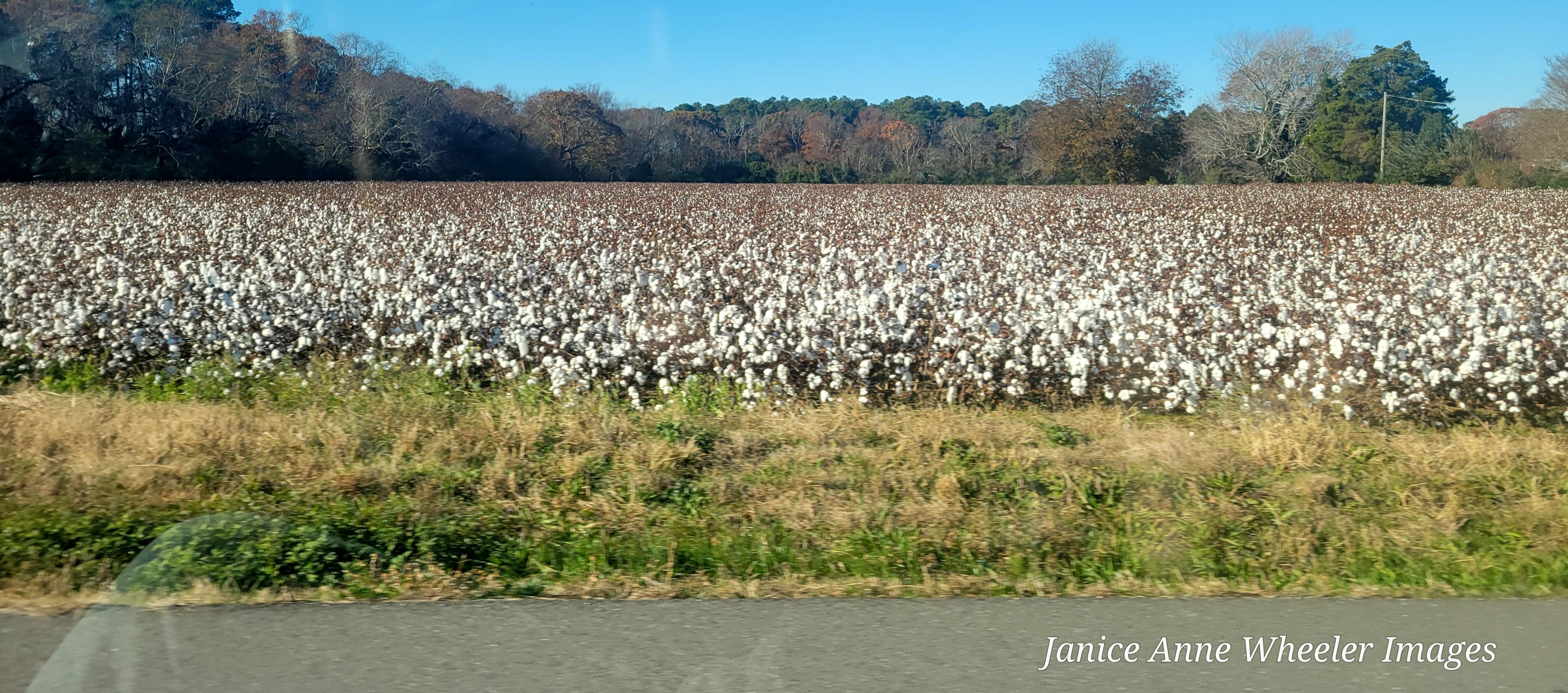
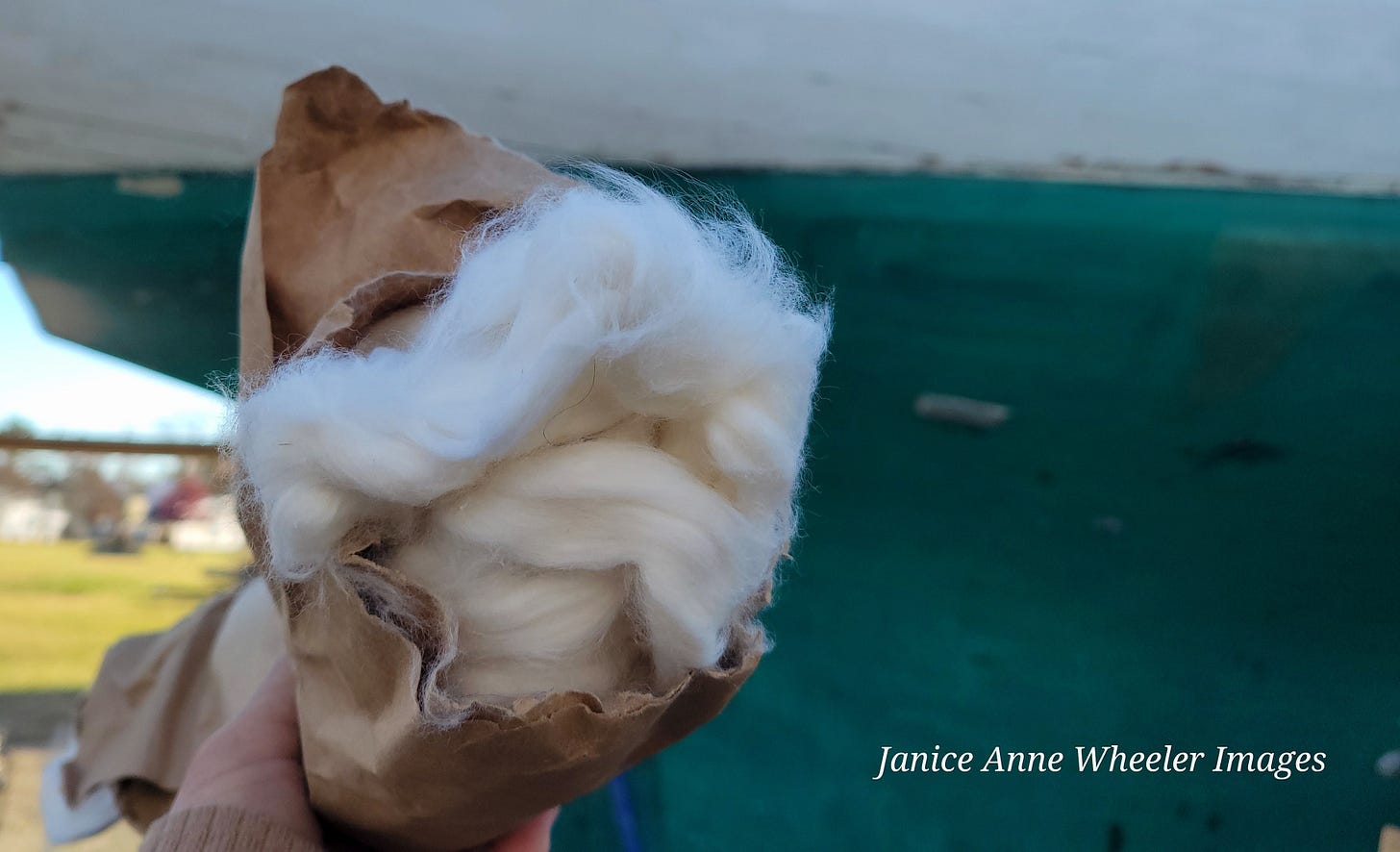
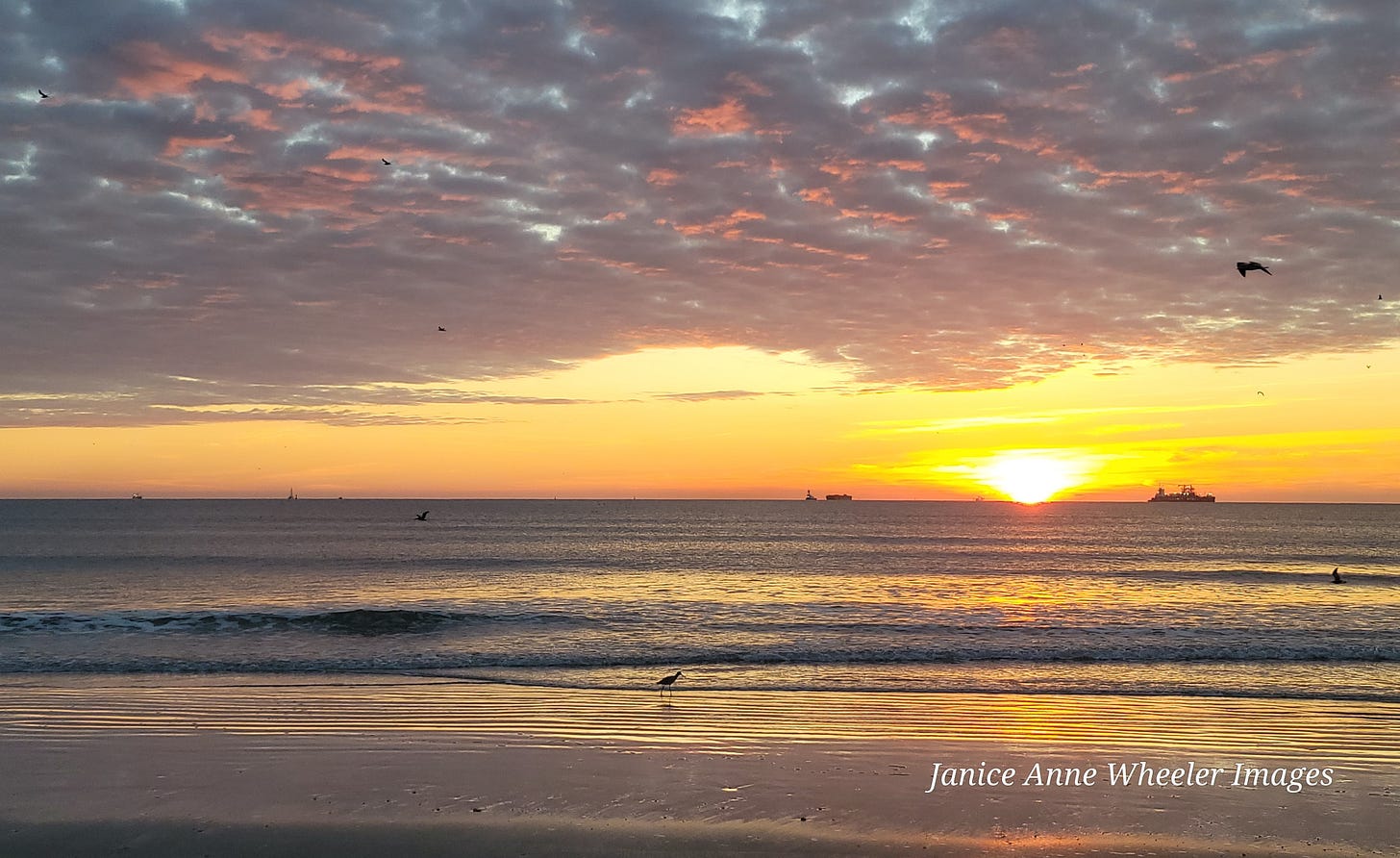
It's a small community indeed that owns caulking irons Bob! The Pride II is a beautiful vessel, I read the book about the sinking of the first. Have a theory, I imagine? Or were they simply SPARRING WITH MOTHER NATURE??
We decided to use pitch in the hold sections after the rebuild where they had concrete. Doing the decks with it must have been an adventure. The hull sides are a forearm workout and balance test!
Hope it's a great Keys winter. Thanks so much for chiming in. J
Those southern cotton fields are something, aren't they? Or driving along, after harvest, past bits of fluff all along the sides of the road. And in both cases easy to mistake for snow at first glance. I'm not sure I've ever seen a pound of cotton in one place, but years ago I delivered 10lbs of lettuce to restaurant and wanted the world to know just exactly HOW MUCH lettuce that was. Bags and bags and bags full!
The work is coming along, tedious though it may be, and I can practically hear your girl expressing her gratitude.
You're right, Substack can be hard to describe. "If a blog site and a social media site made a baby..." At its simplest, it is a platform designed to give writers easy access to the tools needed to publish their works and engage with their audience. (And then the listener raises her eyebrows and nods, as if to say, "Wow, that sounds cool but I have no idea what you're talking about...!" 😂
Hope you have a wonderful week, too, Janice. You and dem boyz.